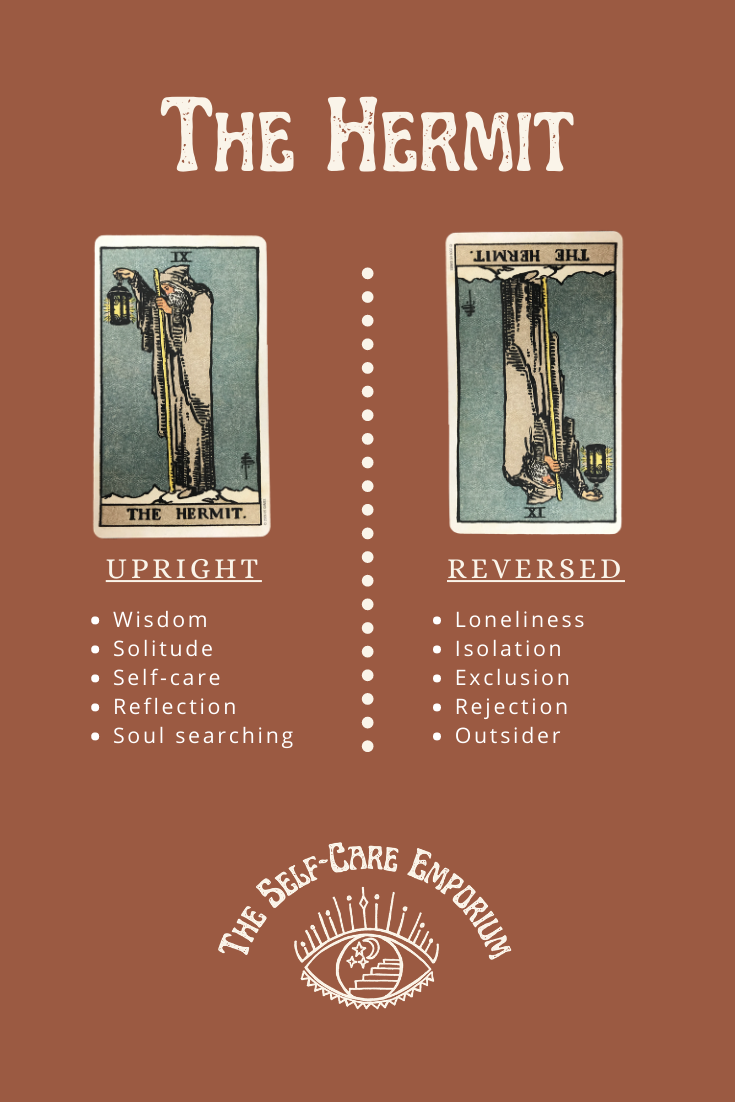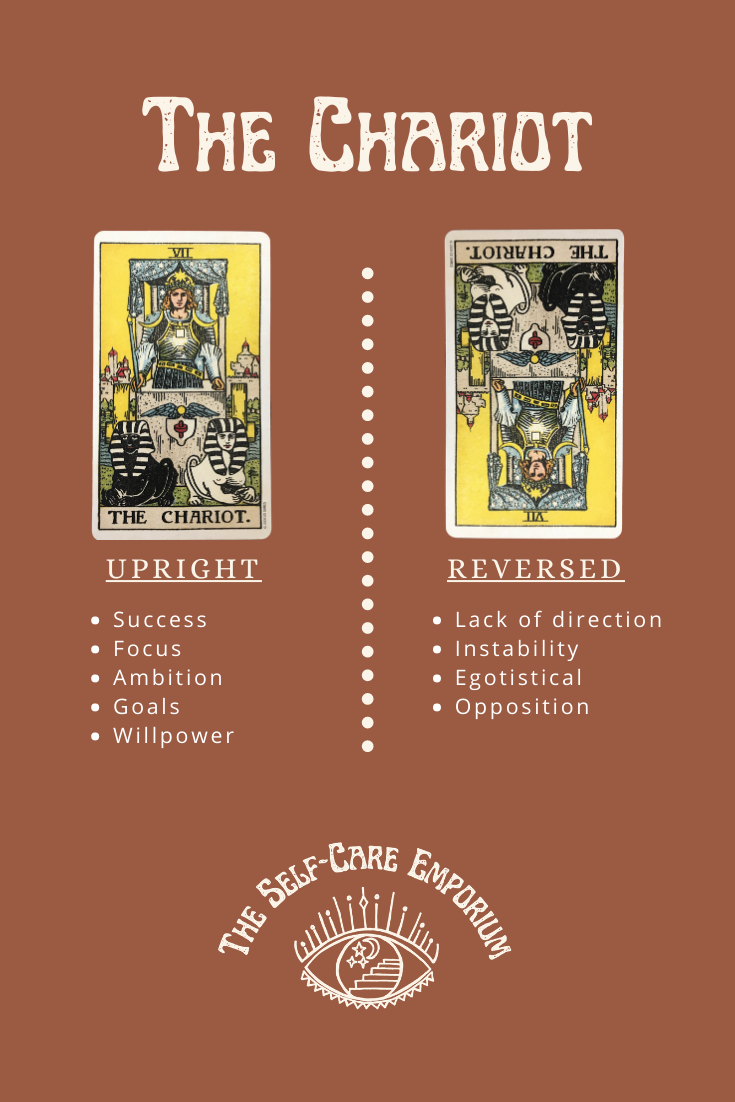The Hermit Card Meaning | Tarot Card Meanings
When it comes to some of the wisest and most philosophical people in history, they all share a common thread and that is that they prioritised time where they could just sit and think. It’s something we very rarely do these days, just carve out some time to think about the world, our lives, who we are and what it all means. That’s the lesson that The Hermit brings to us, a reminder that sometimes we can get too caught up in the external world and we can lose ourselves or at least lose touch with our core essence.
Let’s dive into The Hermit a little more and see what meanings and guidance we can get from this card when it pops up in our spreads.
Get Access to my FULL Tarot Directory
Sign-up to get access to my FREE online resources section and explore my 78 Tarot card directory and all the meanings of the Tarot cards.
Upright
In the upright position, The Hermit is a card of introspection, giving ourselves permission to spend time and energy just thinking about things. This time to ourselves can unlock the wisdom that we would never achieve from simply living our lives trying to get from one day to the next. The main upright meanings of The Hermit are:
-
Inner guidance
-
Isolation
-
Self-discovery
-
Understanding
When The Hermit appears in the upright position it is a sign that we are either in need of this alone time, or we have done that work and now we’re ready to allow our findings to guide us along our next path.
Reversed
In the reversed position, The Hermit can symbolise a feeling of being lost, confused and out of touch with who we are and our personal core values. We have lost our way along our current path and we need to take a step back to really understand why that might have happened and how we can find our way back. The Hermit is a very active card, so it requires you to do the work in order to get the desired results. Some other reversed meanings for The Hermit are:
-
Loneliness
-
Isolation
-
Exclusion
-
Rejection
-
Outsider
Although all of those reversed meanings appear negative, it actually depends on how you look at them. If you are feeling any of these things and The Hermit appears in your spread, it may be an invitation to assess those feelings and see if they are truly factual, or a manifestation of our current mental state. For example, if you feel like an outsider, is being an outsider really a negative thing? If those around you make you feel like an outsider, maybe they’re the problem, not you. Try and see all angles of your current situation and use The Hermit to really assess those feelings, and explore where they come from and where they could possibly lead to.
Reading The Hermit in a spread
Like I mentioned above, The Hermit is a very active card, it requires a lot of participation on your end. Your personal and spiritual development is all down to you, even if you find teachers and influencers along the way, your journey is your own and how deep you go with it is a choice that only you can make.
Let’s take a look at some of the ways we can frame The Hermit when it comes up in our spreads and what kinds of benefits and nutrients we can gain from it.
As an invitation
The Hermit is a big invitation and one that we can’t be on the fence about, we either take it with both hands or we walk away from it. With The Hermit symbolising introspection, when it comes up in a spread framed as an invitation, we are being invited to look inwards rather than for external solutions.
For The Hermit, this invitation could be the following:
-
An invitation to look at your core values and how they were created. Were they based on someone else’s teachings? Do they still vibe with the person you are right now?
-
An invitation to remove yourself from the noise of society and allow more space in your daily thoughts for wandering and exploration.
-
An invitation to allow your inner wisdom to guide you forward along your personal development journey.
As sage advice
When we think about the type of advice we might get from The Hermit, I like to think of the card as a Buddhist monk, a philosopher or another figure that represents divine wisdom. The type of advice The Hermit offers is designed to make you think deeper and without too much influence or guidance from others. That way, your thoughts are 100% your own.
Some advice The Hermit may offer is:
-
Don’t allow your own beliefs and values to be led by others. Know your own mind and be confident within it.
-
Time alone doesn’t have to be lonely or isolating, those things are a state of mind that we have the power to shift and transform.
-
If you feel like you don’t belong, look at why you may feel that way. Are others actively making you feel that way, or is it a narrative you have subconsciously created for yourself as a form of protection?
As a lesson
The biggest lesson The Hermit teaches us is that in order to grow as an individual, we have to allow ourselves to dive fully into our own mind and trust our own thoughts. It’s a lesson in the benefits of self-discovery and self-exploration.
Some lessons that The Hermit may offer you are:
-
To learn how to create space for thinking about the bigger things in life and how we can use that wisdom in our daily lives.
-
To find out who we truly are and start to live as our authentic selves.
-
To learn that we are all individual and unique and to embrace that and run with it as it helps build our personal wisdom.
-
The lesson of not being led blindly by people you think know more than you. Think for yourself and never hand over your intellectual power to others.
As a redirection
The Hermit can be a big redirection as it often tells us that the answers are within when we were previously searching in our external world. We will always look in our external world for answers because it’s easier to comprehend, but the internal world can be the single most important vault for answers and clarity.
As a redirection, The Hermit could symbolise a need to:
-
Set some time aside to do some major inner work in order to find a way to move forward from here.
-
Entertain the idea that the issue may be your mindset and POV, rather than your actions or the actions of others.
-
Allow yourself to be led by your inner light, your personal core values and beliefs instead of being influenced by others
In summary…
The Hermit is one of my favourite cards because it symbolises the opportunity to do some serious spiritual work. Building our wisdom can be a turning point in our lives. People that ‘find’ spirituality often discover a complete u-turn in their way of thinking, which then bleeds into their actions and intentions. This card can be a beautiful catalyst for a brand new chapter in your life.














